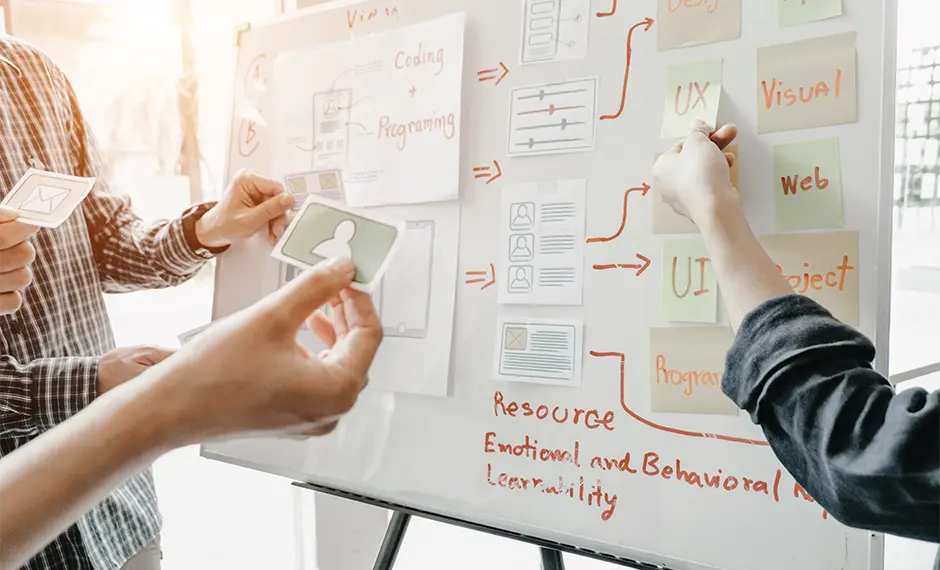Enterprise Application Lifecycle Management
TenUp’s comprehensive enterprise application lifecycle management services navigate intricate technological requirements while prioritizing quality, compliance, & exceptional customer experience.
TenUp’s comprehensive enterprise application lifecycle management services navigate intricate technological requirements while prioritizing quality, compliance, & exceptional customer experience.
Our comprehensive Enterprise Application Lifecycle Management (ALM) services are designed to streamline and optimize software development processes for businesses. Our ALM services encompass the entire software development lifecycle, from initial requirements gathering and design to deployment and ongoing maintenance.
Unleash the potential of full ALM development with seamless coordination, communication and cost-effective delivery of robust applications.

Complete adherence to legal requirements and regulations, mitigating legal risks associated with software development projects.
A keen understanding of the regulatory compliance landscape that governs various sectors to make sure that the software is fully compliant.
Rigorous penetration testing to identify and address security vulnerabilities, ensuring the software's resilience against potential attacks.
Comprehensive vulnerability testing to identify potential weaknesses and address them proactively to enhance the software's security posture.
Effective coordination and communication among stakeholders, ensuring alignment of project goals, expectations, and requirements throughout the development process.
Simplifying the process by actively seeking and incorporating customer feedback throughout the development process.

Our mantra is to get it right the first time with accurate requirement analysis, ensuring transparency on project objectives, scope, and stakeholder expectations.
Improved productivity and faster go to market by streamlining the development process, identifying blockers and eliminating redundancy.
Adoption of agile methodologies for iterative development, shorter and frequent feedback loops and flexibility.
Clear communication throughout the SDLC, fostering effective collaboration among cross-functional teams, stakeholders, and clients.
Robust quality assurance framework such as continuous testing, code reviews, and performance monitoring, to ensure reliable and high-quality software solutions.
Continuous monitoring and support to fix bugs, provide updates, performance optimizations. Evaluating software performance, incorporating user feedback and continuous improvement in future releases.
Seamless integration of custom-built applications into the enterprise, including pre-planned complex integrations, ensuring uninterrupted functionality of parallel applications and optimal outcomes.
We use an incremental and iterative approach where the project is divided into smaller iterations or sprints, delivering working pieces of software faster for continuous feedback and improvement.
Experience regular updates and close collaboration, with feedback on features, priorities and evolving requirements.
Replace rigid long-term planning with adaptive planning where the project scope, timeline and priorities are adjusted based on needs.
Self-organizing, cross-functional teams that have the autonomy to make decisions and take ownership.
Working software at the end of each sprint enables you to provide feedback early, ensuring faster deployment of features.
Regular retrospectives to identify areas of improvement, celebrate successes and foster a culture of continuous improvement.
Dedicated remote teams, comprising skilled professionals who collaborate remotely to deliver high-quality software solutions.
Dip into a global talent pool of experts with diverse skill sets and domain expertise covering the full gamut of application development.
Adoption of Agile project management methodologies ensuring efficient planning, frequent communication, and iterative development.
Secure infrastructure for software development to implement robust security measures and protect confidential information.
Significant cost advantages compared to maintaining an in-house team. Save on overhead expenses, recruitment costs, and employee benefits while enjoying more flexibility.
Ship products faster with rapid development and deployment, increased efficiency and time-to-market.
We can manage your application lifecycle from end-to-end so that you can focus on business development, marketing and other core areas of your business while we take care of the full lifecycle of the application.
The main difference is that ALM provides a broader perspective to include the full lifecycle of application not restricted to development, whereas SDLC focuses specifically on the development phases. ALM manages the application from end-to-end.
Application Lifecycle Management (ALM) encompasses five key stages that include; requirements gathering, design and development, quality assurance, deployment and release, and maintenance and support.
Application governance in ALM (Application Lifecycle Management) is the process of defining and enforcing policies, standards, and best practices for application development, deployment, and maintenance. It involves establishing guidelines and controls to ensure that applications align with business objectives, meet compliance requirements, maintain quality, and adhere to industry standards.
As a vendor specializing in ALM services, TenUp can indeed assist with application governance. We can establish effective governance frameworks by providing expertise, tools, and methodologies to define and enforce governance policies and practices. This includes assisting with the development of governance frameworks, establishing guidelines for application development and maintenance, implementing compliance measures, and ensuring that applications adhere to quality standards throughout their lifecycle.
Application Lifecycle Management Software are special-purpose tools that help in managing the various stages of the ALM from requirements management to development, project management, testing and deployment.
Our team has expertise in almost every programming language.
Engage in an initial conversation to discuss your needs, objectives, and technology, and receive custom solutions aligned with your organization's requirements.
Present a customized solution matching your objectives. Team structure discussions ensure smooth collaboration and successful implementation.
After solution finalization and team structuring, implementation begins. Our experts work closely with you, ensuring clear communication, transparent progress, and performance insights.